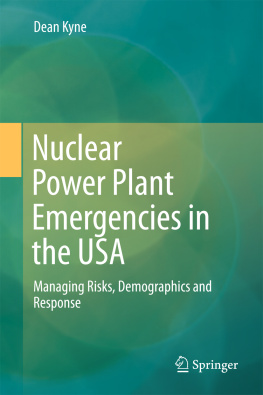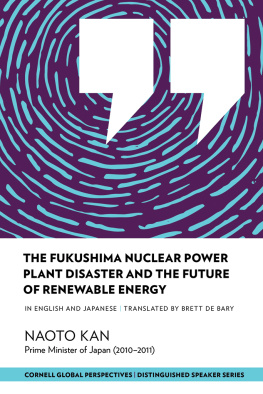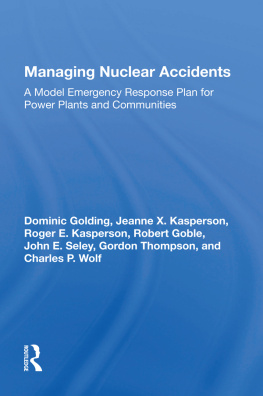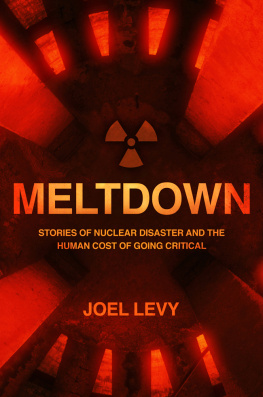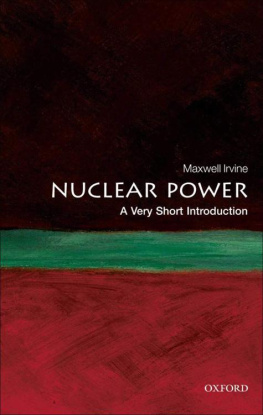Dean Kyne - Nuclear Power Plant Emergencies in the USA: Managing Risks, Demographics and Response
Here you can read online Dean Kyne - Nuclear Power Plant Emergencies in the USA: Managing Risks, Demographics and Response full text of the book (entire story) in english for free. Download pdf and epub, get meaning, cover and reviews about this ebook. year: 2017, publisher: Springer, genre: Politics. Description of the work, (preface) as well as reviews are available. Best literature library LitArk.com created for fans of good reading and offers a wide selection of genres:
Romance novel
Science fiction
Adventure
Detective
Science
History
Home and family
Prose
Art
Politics
Computer
Non-fiction
Religion
Business
Children
Humor
Choose a favorite category and find really read worthwhile books. Enjoy immersion in the world of imagination, feel the emotions of the characters or learn something new for yourself, make an fascinating discovery.
Nuclear Power Plant Emergencies in the USA: Managing Risks, Demographics and Response: summary, description and annotation
We offer to read an annotation, description, summary or preface (depends on what the author of the book "Nuclear Power Plant Emergencies in the USA: Managing Risks, Demographics and Response" wrote himself). If you haven't found the necessary information about the book — write in the comments, we will try to find it.
Managing nuclear power emergencies is significantly different from managing other types of emergencies, including fire, flood, and other disasters because nuclear disaster management requires special technical skills and a rigid protocol which outlines detailed steps and procedure before an evacuation announcement could be made. It was evident that the impacts from a nuclear power core-meltdown accident were immerse, irreversible, and inevitable, as evident by evaluating the three historic core-meltdown accidents, namely Three Mile Island in 1997, Chernobyl in 1986, and Fukushima Daiichi in 2011. The three options for minimizing the risks associated with NPPs are suggesting elimination of all NPPs in operation in the United States, transforming inevitable risks to evitable risks, and transforming the current radiological plan into an effective emergency management plan. Being the latter option is the only viable one, this book provides a comprehensive understanding on effectively managing nuclear power emergencies in the U.S.
The book presents detailed analysis on effectively managing nuclear power emergencies. In an attempt to illustrate minimizing the risks, factual answers to the key questions surrounding managing nuclear disasters are outlined. What are the risks associated with the nuclear power plants (NPP)? What are the problems associated with managing nuclear power core-meltdown accidents in the three historic accidents? Where are the geographical locations of the 99 commercial reactors in the U.S? Who are those exposed to potential risks associated with the NPPs? How could a projection of radioactive plume dispersion pathway be carried out using a spatial computer code, such as the Radiological Assessment Systems for Consequence Analysis (RASCAL) in case of a core-meltdown accident? Where would the radioactive plume go given weather conditions? Who are more likely to be exposed to the high level radiation dose during the core-meltdown accident? What are the issues with the current radiological emergency plan?
Dean Kyne: author's other books
Who wrote Nuclear Power Plant Emergencies in the USA: Managing Risks, Demographics and Response? Find out the surname, the name of the author of the book and a list of all author's works by series.

